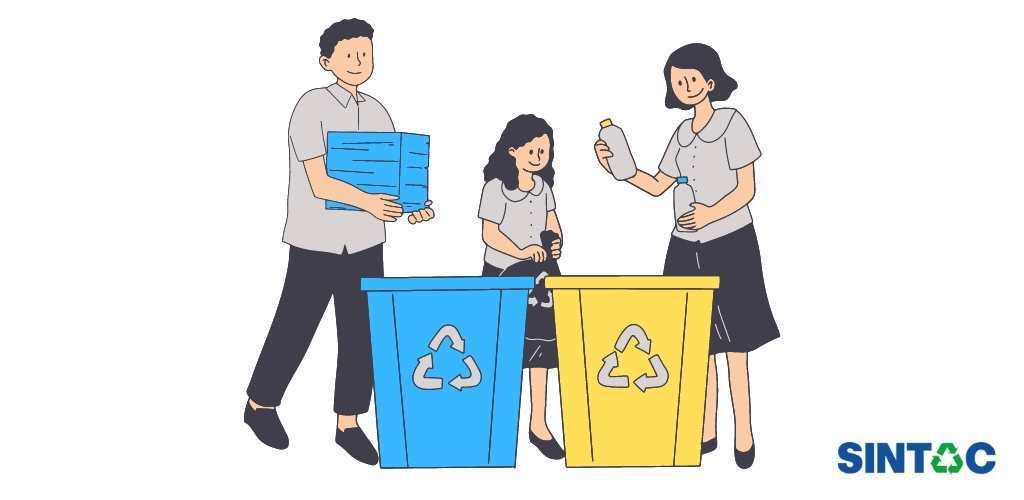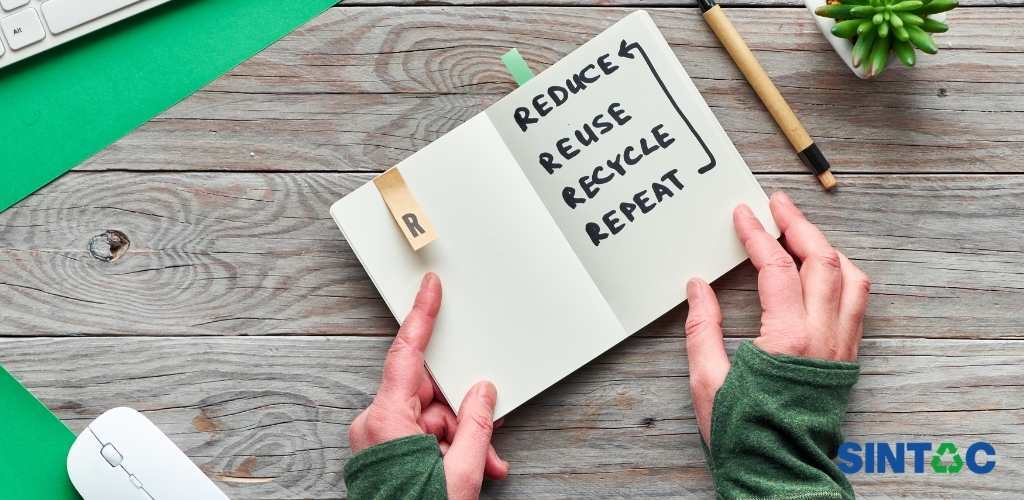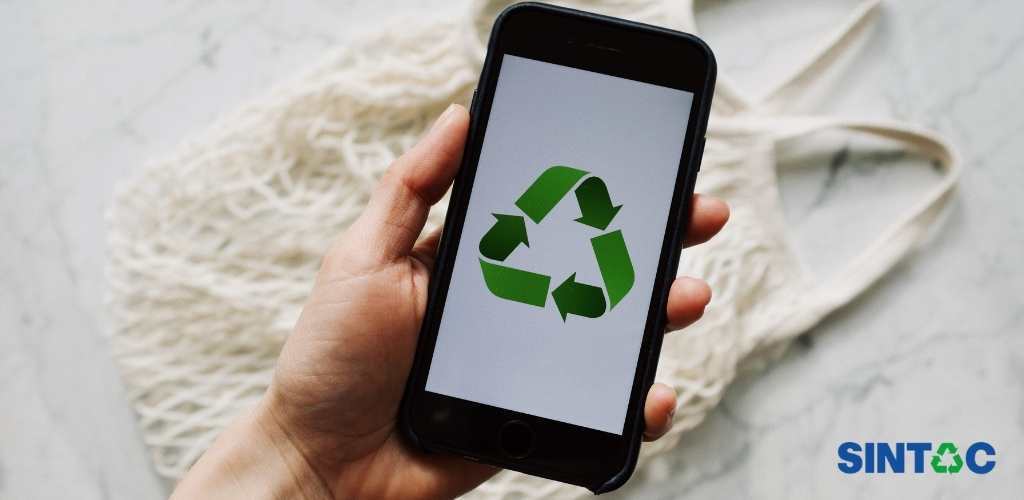The 3 R’s
The three Rs of recycling
The three Rs is a motto that many people learn in school – reduce, reuse, recycle. It has long been used as a sustainable proverb; a way of thinking about waste management in an attempt to protect the environment. But the words themselves don’t paint the whole picture. But the words themselves don’t paint the whole picture – which “R” is the most important, and is there a more important “R”? Why do people focus so much on the third “R”, recycling, rather than the other two?
From the name of our company, you might think that recycling is the most important “R”. The truth is that most waste management advocates, including ourselves, would tell you that recycling, while incredibly important and valuable, is actually at the bottom of the waste management hierarchy.
Recycling: the good and the not so good
It is no secret that we at SINTAC are advocates of waste recycling. Recycling reduces the amount of waste sent to landfills and incinerators, conserves natural resources such as wood and water, prevents pollution, conserves energy and much more. But recycling alone cannot overcome the growing problems associated with waste production. Why?
The problem with recycling is the perception that promoting recycling above all else can cause problems because people may be inclined to believe that their consumption can be offset by recycling.
In a study published in the Journal of Consumer Psychology, researchers found that “consumers may view the possibility of recycling a product as a “get-out-of-jail-free card” that makes consumption more acceptable… leading to higher levels of consumption”. In the same article, they conducted a study in which they looked at how many paper towels people used in a bathroom when a recycling bin was present versus without. They found that “the average daily use of paper towels in the bathroom per person increased after the introduction of a recycling bin”. They believe that people are more likely to consume more when recycling is an option because it almost alleviates some of the guilt associated with waste production.

Recycling is often the most popular of the Three Rs because it is simply the easiest. It is easier to buy products without considering waste production, and then recycle what you can, than to actively make purchasing decisions with waste management in mind. Recycling is a more accessible route to waste management because it requires less effort on the part of the consumer. This is probably why we have seen, heard and learned more about recycling than the other two Rs.
Recycling is a series of steps that take a used material and process, remanufacture and sell it as a new product. Start recycling at home and at work:
- Buy products made from recycled material. Look for the recycling symbol or ask shop assistants. The recycling symbol means one of two things: either the product is made from recycled material, or the item can be recycled. For example, many plastic containers have a recycling symbol with a numbered code that identifies the type of plastic resin it is made from. However, just because the packaging has this code does not mean that it can be easily recycled locally.
- Consider buying recycled materials when purchasing materials for office supplies, office equipment or manufacturing.
- Talk to shop managers and ask for products and packaging that help reduce waste, such as recycled products and products that are not over-packaged.
- Buy products made from material that is collected for recycling.
- Use recycled paper for letterhead, photocopier paper and newsletters.
So is it a bad thing to promote recycling? Of course not. Recycling is much better than allowing waste to go to landfill or an incinerator, and recycling has many advantages. Recycling, the third “R”, has been at the forefront of waste management strategies and is often the most touted method of environmental protection. But the other two R’s are just as important, if not more so.

The other two R’s: reduce and reuse
Waste reduction and reuse are really the stars of the show. The best way to manage waste is not to generate it in the first place, if possible. There are many ways to reduce waste, such as reducing packaging purchases, avoiding single-use products, buying items in bulk, and so on. The Zero Waste movement is accelerating around the world, so there are many ideas and tips on the internet for reducing waste in an accessible way. Check out UCSB’s Zero Waste Committee for tips on how to get involved.
The best way to manage waste is not to produce it. This can be done by shopping carefully and keeping some guidelines in mind:
- Buy products in bulk. Larger, economy-sized products or products in concentrated form use less packaging and usually cost less per ounce.
- Avoid over-packaged products, especially those that are multi-material, such as foil, paper and plastic. They are difficult to recycle, and you pay more for the packaging.
- Avoid disposable products such as paper plates, cups, napkins, razors and lighters. Disposable products contribute to the problem and cost more because they need to be replaced again and again.
- Buy products that are durable, well-built or with a good warranty. They will last longer, save money in the long run and save landfill space.
- At work, make two-sided copies whenever possible.
- Keep central files rather than using several individual files.
- Use email or the main noticeboard.
- Use cloth napkins instead of paper napkins.
- Use a tea towel instead of paper towels.

Re-use is also a very valuable tool in waste management. This includes buying products that you know you can use for multiple purposes, such as shopping bags, reusable water bottles, reusable straws, food containers, etc. The aim of reuse is to increase the useful life of an item for as long as possible to keep it out of landfills and avoid the need to buy a new product.
Reusing products makes economic and environmental sense. Sometimes it takes creativity:
- Reuse products for the same purpose. Save paper and plastic bags, and fix broken appliances, furniture and toys.
- Reuse products in different ways. Use a coffee can to store food; use plastic bottles as decorated flower pots.
- Sell old clothes, appliances, toys and furniture on second-hand Apps, or donate them to charity.
- Use resealable containers instead of plastic wrap.
- Use a ceramic coffee cup instead of paper cups.
- Reuse shopping bags or take your own cloth bags to the shop. Don’t take a bag from the shop unless you need it.
Conclusions and what we can do
So, is there a more important “R”? The answer is: yes and no. The three R’s are: reduce, reuse and recycle, in that order, for a reason. At the forefront of waste management techniques should be waste reduction, followed by reuse and finally recycling. But all three R’s are important in their own right, as they all have their benefits.
As citizens of our shared Earth, we all have daily opportunities to reduce our waste. When shopping, try to choose the option without plastic packaging or the option that you can reuse several times. Bring your own reusable utensils and straws to restaurants, and avoid buying single-use items. There are countless ways in which we can all have a positive impact on waste management. The 3Rs tell us, in order, which waste management strategies to focus on. It is up to us to follow them.












